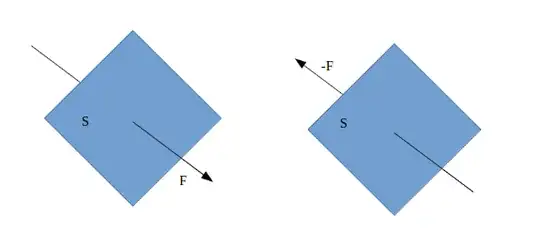As referred to this question Why can't charge be in a stable equilibrium in electrostatic field?, it is given that
Fig. 5–1.If $P_0$ were a position of stable equilibrium for a positive charge, the electric field everywhere in the neighbourhood would point toward $P_0$. Consider a tiny imaginary surface that encloses $P_0$, as in Fig. 5–1. If the electric field everywhere in the vicinity is pointed toward $P_0$, the surface integral of the normal component is certainly not zero. For the case shown in the figure, the flux through the surface must be a negative number. But Gauss’ law says that the flux of electric field through any surface is proportional to the total charge inside. If there is no charge at $P_0$, the field we have imagined violates Gauss’ law. It is impossible to balance a positive charge in empty space—at a point where there is not some negative charge. A positive charge can be in equilibrium if it is in the middle of a distributed negative charge. Of course, the negative charge distribution would have to be held in place by other than electrical forces.
Please explain the part which is denoted in bold. I have tried to comprehend the idea but did not get anything. My question is why the integral will be negative. I was also reading about this in the book Basic Laws of Electromagnetism, I encountered the same problem where is written:
the flux of E through the surface S is negative
Any help will be appreciated.
